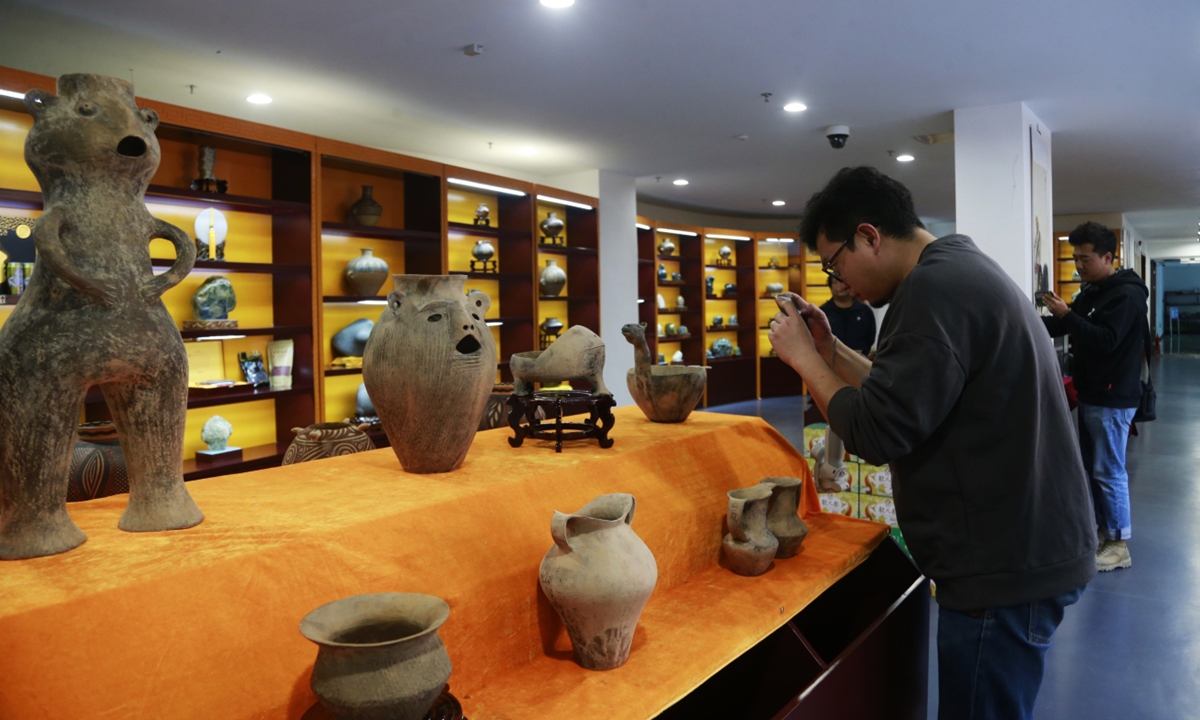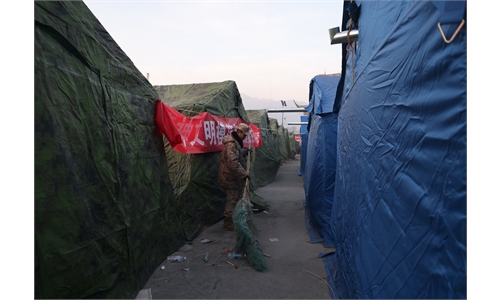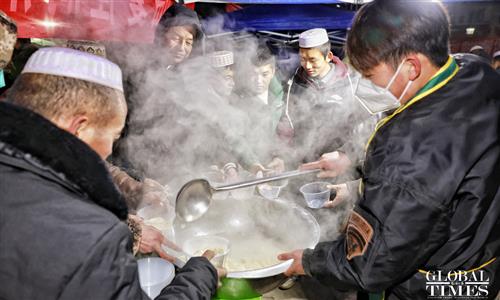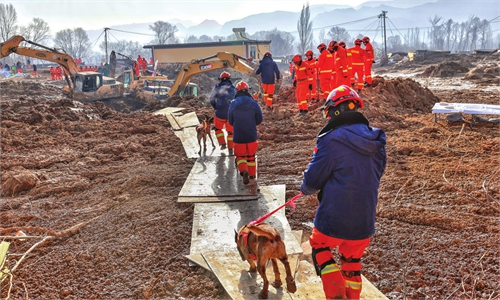ARTS / CULTURE & LEISURE
‘Eastern Pompeii’ suffers massive damage in quake

La Jia Ruins Museum Photo: VCG
Relics in the La Jia Ruins Museum in Northwest China's Qinghai Province suffered massive damage after a 6.2-magnitude earthquake hit neighboring Gansu Province at midnight on Monday.
The La Jia ruins, located less than 50 kilometers from Jishishan county, the epicenter of the earthquake, is known for hosting artifacts from the late Neolithic to the early Bronze Age.
Wu Xiulan, the director of the museum, told local media earlier this week that the damage the museum sustained ranges from a crack on the museum walls to broken pottery.
"It's mostly all pottery, jade and bone tools [that suffered damage]. Some of them were shaken off their displays and broke, some of them shattered when the glass display case fell over and was smashed," Wu was quoted as saying.
An initial investigation suggests that over 200 relics have been damaged by the earthquake, according to the local cultural authority. Calls to the museum went unanswered on Thursday.
The La Jia site, discovered in 1981 and now often referred to as the "Eastern Pompeii" for its unique preservation of prehistoric disasters such as earthquakes, floods and mudslides, has been a treasure trove of ancient artifacts.
Notably, the archaeological team discovered evidence of the world's earliest known noodles within a clay bowl at one of the dwelling sites.
The other well-known discovery at the site consists of the skeletons of victims who died in an ancient earthquake. A female adult was found huddling a kid, though later DNA analysis showed there was no apparent maternal kinship between the victims.
In 2013, the National Cultural Heritage Administration put the La Jia site on the list of the second batch of national archaeological site parks, making it the first national archaeological site park in Qinghai Province.



